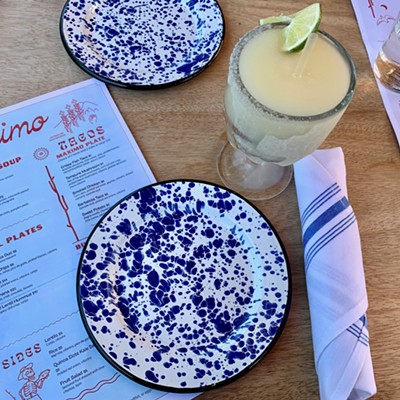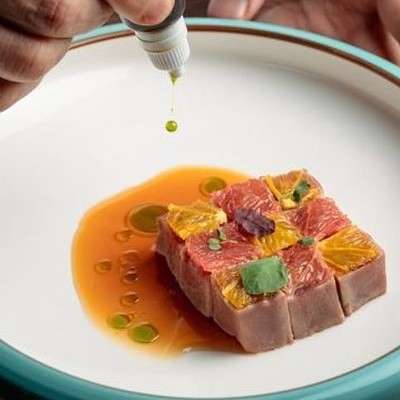Support Us
Houston's independent source of
local news and culture
account
- Welcome,
Insider - Login
- My Account
- My Newsletters
- Contribute
- Contact Us
- Sign out
[
{
"name": "Related Stories / Support Us Combo",
"component": "11591218",
"insertPoint": "4",
"requiredCountToDisplay": "4"
},{
"name": "Air - Billboard - Inline Content",
"component": "11591214",
"insertPoint": "2/3",
"requiredCountToDisplay": "7"
},{
"name": "R1 - Beta - Mobile Only",
"component": "12287027",
"insertPoint": "8",
"requiredCountToDisplay": "8"
},{
"name": "Air - MediumRectangle - Inline Content - Mobile Display Size 2",
"component": "11591215",
"insertPoint": "12",
"requiredCountToDisplay": "12"
},{
"name": "Air - MediumRectangle - Inline Content - Mobile Display Size 2",
"component": "11591215",
"insertPoint": "4th",
"startingPoint": "16",
"requiredCountToDisplay": "12"
}
,{
"name": "RevContent - In Article",
"component": "12527128",
"insertPoint": "3/5",
"requiredCountToDisplay": "5"
}
]
Few Peruvian spirits entered the U.S. market until about 20 years ago, so as far as recognition goes, it’s still a game of catch-up. Pisco is the most recognizable spirit from there, but people whose first taste of it was decades ago might not have fond memories.
Pablo Valqui, a native Peruvian who also lived and worked Germany for a time, was formerly the fine foods buyer for Spec’s. These days, he’s the sales manager at a small company called Barb Distribution, which specializes in wine and spirits from Peru. He remembers tasting pisco as a young man. “When I was growing up,” says Valqui, “Pisco was terrible to drink! It’s come a long, long way and so has the wine.”
Valqui says that until about 15 years ago, most grapes in Peru were used for pisco. Eventually, vineyard owners realized that they were failing to capitalize on the world market of wine drinkers. It was at that point that the focus changed to making quality wines for export. As a direct result, the quality of pisco has improved and become a lot more interesting.
“In order to make good pisco, you have to make good wine first,” explained Valqui. “Pisco is a distilled wine. It’s made like cognac but without aging.” Essentially, pisco is a clear, un-aged brandy.
In Peru, only eight types of grapes can be used in the production of pisco: four “non-aromatic” red grapes (Quebranta, Negra Criolla, Mollar and Uvina) and four are “aromatic” white grapes (Italia, Torontel, Moscatel and Albilla). Pisco made with two or more are called acholado. In some cases, winemakers are tapped to lend their experience in blending different types of grapes to the pisco-making process.
Pisco made with the mosto verde method means fresh grape juice is added to the fermented juice in the still. The fresh juice evaporates quickly but leaves a lot of flavor behind. It uses a lot of grapes to make pisco this way.
Valqui is a fan of Santiago Queirolo Pisco and says them are some of the best available these days. There are four kinds: one made strictly with the Quebranta grape; one made from Italia; an acholado with Italia, negra criolla, moscatel and quebranta; and a plum-flavored one called Masco Queirolo Ciruelas. If you want to try before you buy an entire bottle, Chris Frankel usually keeps some in stock at Spare Key at 2416 Brazos in Midtown. All are easy sippers and lend themselves especially well to cocktails.
The best-known pisco cocktail is, of course, the Pisco Sour. However, Valqui says that in Peru, it's more often used in the Chilcano De Pisco, a simple combination of pisco, ginger ale, fresh lime juice and Angostura. Valqui provided a recipe and highly recommends using Reed's Ginger Ale, made with actual fresh ginger. The proportions are flexible, so you can easily adjust to your own tastes.
Chilcano De Pisco
2 or 3 ounces pisco
1/2 ounce lime juice (or juice from one large lime)
6 to 8 ounces Reed's Ginger Ale
Lime slice and/or fresh ginger shavings to garnish
Combine the pisco and lime juice with ice in a shaker. Shake about 15 seconds to thoroughly chill. Strain into a Collins glass that's either been pre-chilled or over ice. Top with ginger ale and stir gently to combine so as to not lose too much of the carbonation. Garnish with the lime slice and fresh ginger.
In coming days, we’ll delve into the evolution of Peruvian rum. It is often overlooked, yet is proving it can compete with the best aged rums in the world.
KEEP THE HOUSTON PRESS FREE...
Since we started the Houston Press, it has been defined as the free, independent voice of Houston, and we'd like to keep it that way. With local media under siege, it's more important than ever for us to rally support behind funding our local journalism. You can help by participating in our "I Support" program, allowing us to keep offering readers access to our incisive coverage of local news, food and culture with no paywalls.
Phaedra Cook
Contact:
Phaedra Cook
Trending Food & Drink
- Where to Brunch in Houston This Mother’s Day 2024
- Upcoming Houston Food Events: Greek Easter and a Top Taco Throwdown
- This Week in Houston Food Events: A Buzzy Pickleball Bar Makes its Debut
-
Sponsored Content From: [%sponsoredBy%]
[%title%]

Don't Miss Out
SIGN UP for the latest
food & drink
news, free stuff and more!
Become a member to support the independent voice of Houston
and help keep the future of the Houston Press FREE
Use of this website constitutes acceptance of our
terms of use,
our cookies policy, and our
privacy policy
The Houston Press may earn a portion of sales from products & services purchased through links on our site from our
affiliate partners.
©2024
Houston Press, LP. All rights reserved.




